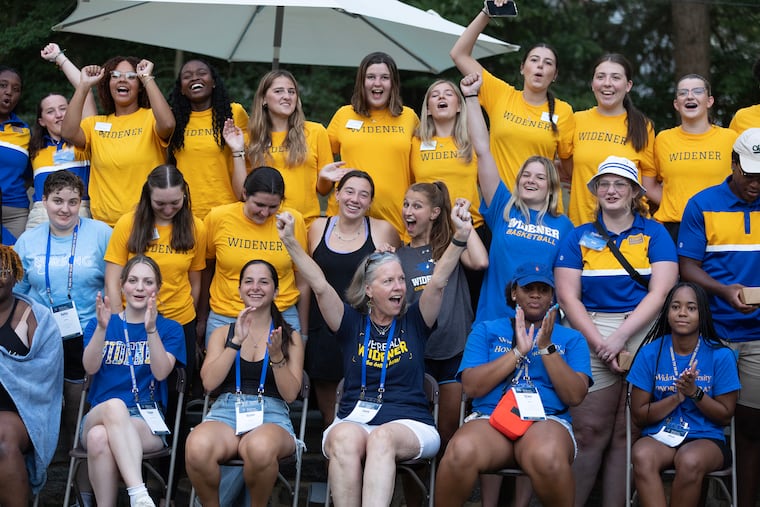While FAFSA is being revamped, colleges should eliminate decision deadlines
Because of ongoing issues, most students won’t start seeing financial aid offers until April and beyond. Widener is suspending the May 1 decision deadline for our applicants.

The high school Class of 2024 faces yet another obstacle: a long delay in the process by which universities assess students’ eligibility for critical federal, state, and institutional financial aid.
The delay concerns the Free Application for Federal Student Aid, or FAFSA. As part of the program, prospective students and their families answer questions about their income, along with other factors, to determine if they qualify for federal aid for their education. Institutions like Widener University need this data to provide a financial aid offer to prospective students, and to consider students for institutionally funded, need-based grants. For Pennsylvania students, the FAFSA is also a necessary requirement to apply for the PA State Grant Program, thus compounding the stakes.
Recently, the U.S. Department of Education announced that it was revamping the FAFSA at the behest of Congress. The changes will dramatically simplify the process in the long run. However, in the first year of such a sweeping overhaul, the department told students and colleges to expect a delay of two to three months to accommodate the redesign. Rather than being available on Oct. 1, the traditional opening of the FAFSA, the department “soft launched” the new process beginning on Dec. 30.
The early days of the launch were replete with problems. Students found themselves trapped in virtual waiting rooms as the department limited access. An update to the IRS website took the FAFSA offline for a full day. Technical glitches found students unable to proceed without deploying an unusual hack (deleting their street address from the form). Then we learned that the department missed a critical inflation adjustment, requiring another substantial change to ensure students aren’t shortchanged of some $1.8 billion of aid.
And that was just what happened in January.
Unfortunately, challenges and delays continue to worsen.
On Jan. 30, the department announced that it wouldn’t be in a position to even begin sending FAFSA data to colleges and universities until sometime in March — five months later than traditionally expected. This halts the ability of colleges to provide critical financial aid offers to students at a pivotal moment in their senior year.
Moreover, any student who made a mistake on their FAFSA will be unable to correct those errors until sometime in March. Given that at least one question is poorly phrased (in a section about direct unsubsidized loans, students are asked a question that appears somewhat unrelated to the topic, and may seem difficult to answer as yes or no), we suspect there will be an uptick in mistakes, potentially denying students aid they deserve.
The bottom line: Most students won’t start seeing financial aid offers until April and beyond — on the heels of National College Decision Day on May 1. This potentially reduces the decision-making window for students and families from several months to a few short weeks — or even days.
These delays further exacerbate the anxiety students are facing in the wake of this unusual financial aid year. And we know the burden will be disproportionately felt by our most vulnerable students: students from low-income households, those in underserved schools, and applicants without mentors to help them navigate the college search process.
That’s why we are suspending the May 1 decision deadline for our applicants.
We urge our fellow university leaders to do the same. Let’s all ensure our students have time to fully consider their options — and they can’t do that without accurate and complete financial aid offers. While a new deadline might ultimately be necessary, we’re not setting one yet (and we won’t set a new deadline without giving plenty of notice to our applicants). We need a better sense of how quickly and completely FAFSA data starts flowing in March, and how many students will require our assistance in correcting inaccuracies.
Finally, to students looking forward to launching their college careers next fall, please complete the FAFSA. Despite these challenges, you risk leaving precious federal, state, and other resources on the table when considering your college journey without a FAFSA on file. We also encourage students to make use of the net price calculators on the websites of schools they are considering, which allow students to estimate their costs by entering their financial information to find out what similar students received in grants and scholarship aid toward tuition.
And importantly, we urge students to be patient with the colleges and universities they are considering. When the FAFSA pipeline has started flowing, we’ll all be working overtime to provide students with a financial aid offer, guidance, and support to help them choose their next home.
Stacey M. Robertson is the 11th president of Widener University. Joseph E. Howard is vice president for enrollment at Widener University.